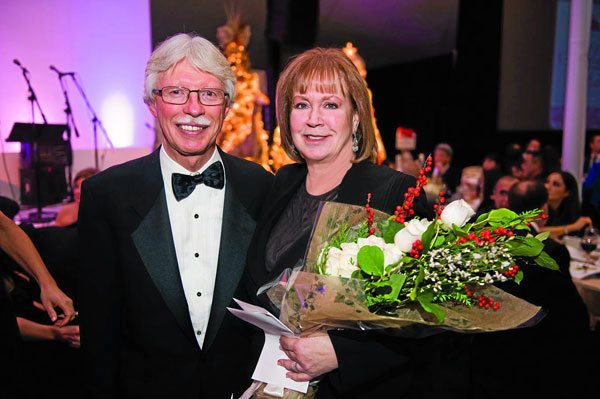
January 18, 2018; Los Angeles Times
Ten years ago, Melanie and Richard Lundquist pledged $50 million to ten schools in some of L.A.’s most impoverished neighborhoods through a nonprofit they cofounded called the Partnership for Los Angeles Schools, writes Steve Lopez for the Los Angeles Times. The Lundquists, who own a company that develops and manages four million square feet of commercial real estate, are among southern California’s leading philanthropists. Their donation is the largest individual donation ever made to Los Angeles schools, writes C-Suite Quarterly (CSQ).
Often education donations have focused on supporting charter schools. But this was not the route of the Lundquists. Lopez notes that “the Lundquists, who both attended LAUSD (Los Angeles Unified School District) schools in their youth,” were committed to investing directly in public schools. Every year for the past decade, they have written checks for $5 million to help finance campus improvements, teacher development training, and other resources. Now, Lopez adds, they’re signing up for 10 more years of giving, “making an additional $35-million commitment to keep the momentum going.”
Melanie Lundquist explains that a key motivation for the gift is her belief that young people today do not have the opportunities she did when she was growing up. Lundquist notes that, “a lot of people think I must have grown up rich, but no, I did not. Quite the opposite.”
For Lundquist, something is awry in philanthropy when her private college alma mater, the University of Southern California (USC), could easily meet a $6-billion fundraising target even as “public school funding per pupil lags in the bottom tier nationally” in California. According to Lundquist, the Partnership through its fundraising has been able to add “about $650 in spending for each of the roughly 14,500 students” that attend participating schools. Lundquist adds that, “Richard and I like to go where most people don’t. I could’ve given $50 million to USC, but they’ve got deep-pocketed donors all over the place.”
Lopez explains that the Partnership developed after former mayor Antonio Villaraigosa got the chance to work with the district’s ten lowest performing schools. This, Lopez adds, was kind of a “consolation prize” for the mayor, after Villaraigosa’s effort to establish direct mayoral control of the school system failed. A talk he gave about public schools during his mayoral run inspired Melanie to directly support public schools. Since the Partnership was launched 10 years ago, eight other schools have joined, increasing the number of participating campuses to 18.
Lopez adds, “These are not charter schools, which operate with public funding but are self-governing. The Partnership schools are sort of a hybrid. They have nonprofit administration but play by the same rules as traditional neighborhood schools and must abide by LAUSD’s union contracts.”
The results have been solid, but not miraculous. Lopez writes that, “Although almost all Partnership schools have shown improvement on statewide proficiency tests and some have seen gains that outpace other district schools, many…students remain in the lower ranks, and five Partnership schools were on a 2016 list of the 20 LAUSD schools with the lowest performance.”
Sign up for our free newsletters
Subscribe to NPQ's newsletters to have our top stories delivered directly to your inbox.
By signing up, you agree to our privacy policy and terms of use, and to receive messages from NPQ and our partners.
Still, there have been significant improvements. On its website, the Partnership reports that graduation rates at participating schools have increased from 36 percent to 81 percent, while suspension rates have fallen from 21 percent to three percent.
Lundquist also says she understands that change will be slow. Lundquist explains:
Everybody, I think, has a sense of urgency about our problems and what can and can’t be done about them. And if something after two or three years hasn’t been fixed, they want to move on to the next thing. Well, I’ve watched this break for 50 years, and I knew it wasn’t going to be fixed in five or 10 years.
Lopez adds that Lundquist “knew early on that she wanted to add another 10 years of commitment, and if there’s still work to be done a decade from now, maybe she’ll be in this for 30 years, still visiting campuses regularly and finding inspiration from principals, teachers and students.”
John Rogers, who runs UCLA’s Institute for Democracy, Education and Access, tells Lopez that beyond that student performance gains, a “notable [Partnership] success has been in turning some of its schools into healthy havens, safe from surrounding crime, poverty and blight.”
Rogers adds that, “The Partnership gets credit for taking on some of the most challenging schools in Los Angeles…as opposed to picking off easy wins, so to speak. When people around the country talk about models of restorative justice and peaceful environments, I point them to some of the Partnership schools.”
Joan Sullivan, who has been the Partnership’s CEO for the past five years, observes that, “There are no hidden solutions to improving the nation’s schools. Our gains have accelerated over the years, and continuity of effort makes the difference.”—Steve Dubb













